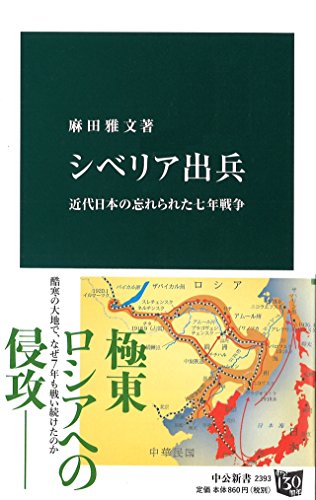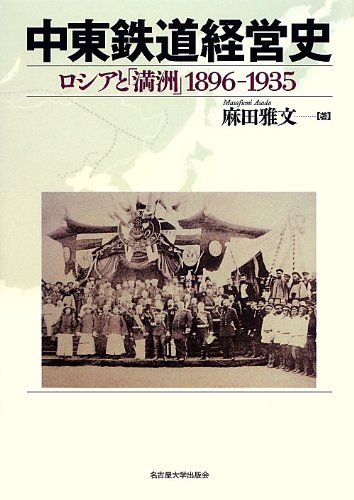30 0 0 0 日ソ戦争アーカイブズ構築に関する日露共同研究
本研究は、日ソ戦争史研究の基盤(日ソ戦争アーカイブズ)構築を目的として2つの目標を設定する。第1の目標は、研究の土台となるロシアに点在する日ソ戦争関係の歴史資料(アーカイブズ)を日露共同で調査・収集を行う。第2の目標は、収集した資料の一部を翻刻して出版(またはテキスト公開)するとともに、独露間の資料共用化プロジェクトを参考に、国際的データベース・ソフトのAtoMを活用して所在情報・収集資料の共用化を図る。上記の目的に基づき、第3年度はロシア国内での調査収集の拡充を図る予定であったが、新型コロナウィルスの感染拡大のためロシアを中心とした海外調査が不可能となり、事実上研究遂行が停止状態のなかで計画の大幅な見直しを行わざるを得なかった。海外調査が困難ななか、研究成果の発信に力点を置くこととし、11月14日開催のロシア史研究会大会パネル「日ソ戦争-研究の新視点と新資料」において「ソ連軍の満洲占領と地域秩序の崩壊」と題する報告を行った。また、ロシア調査で収集した資料を基に『海外引揚の研究-忘却された「大日本帝国」』(岩波書店、2020年11月)を刊行した。また、各分担者においても単著の刊行など研究成果の発信に努めた。この他、資料調査に関しては、日本国内(樋口季一郎記念館・鶴岡市郷土資料館・舞鶴引揚記念館など)での日ソ関係資料の調査を行い、初年度から続けているロシア語文献収集および収集資料のデータベース化による基盤構築研究を進めた。
- 著者
- 麻田 雅文
- 出版者
- 日本貿易振興機構アジア経済研究所研究支援部
- 雑誌
- アジア経済 (ISSN:00022942)
- 巻号頁・発行日
- vol.50, no.10, pp.2-26, 2009-10
5 0 0 0 OA 日露関係から見た伊藤博文暗殺 : 両国関係の危機と克服
- 著者
- 麻田 雅文
- 出版者
- 東北大学東北アジア研究センター
- 雑誌
- 東北アジア研究 (ISSN:13439332)
- 巻号頁・発行日
- vol.16, pp.1-26, 2012-02-20
2 0 0 0 IR 日露関係から見た伊藤博文暗殺 : 両国関係の危機と克服
- 著者
- 麻田 雅文
- 出版者
- 東北大学東北アジア研究センター
- 雑誌
- 東北アジア研究 (ISSN:13439332)
- 巻号頁・発行日
- no.16, pp.1-25, 2012
2 0 0 0 OA ソ連軍接収関東軍文書に関する日露共同研究
- 著者
- 加藤 聖文 黒沢 文貴 松田 利彦 麻田 雅文 カタソノワ エリーナ バルターノフ ワシリー キム セルゲイ ムミノフ シェルゾッド フセヴォロドフ ウラジーミル
- 出版者
- 国文学研究資料館
- 雑誌
- 基盤研究(B)
- 巻号頁・発行日
- 2014-04-01
研究実施前から把握されていたロシア国防省中央公文書館(CAMO)が所蔵する関東軍文書のすべての画像データを入手し、目録を作成した。また、研究成果の一部として、ロシア側研究者らを招いて2017年2月24日に法政大学において国際会議「第二次世界大戦史研究(ソ連における外国人捕虜問題)」を開催し、60名以上の参加を得た。しかし、今回収集した関東軍文書は1990年代のロシア混乱期に明らかになった文書と異同があることが明らかになった。今回収集した文書の公開に加え、これらの未確認文書の調査に関しては、ロシア側と交渉を行ったが、研究期間内に解決することができず、現在も協議が継続中である。
1 0 0 0 OA 日露戦争前後における中東鉄道収用地の形成と植民計画 : 満洲における特殊法域の誕生
- 著者
- 麻田 雅文
- 出版者
- 公益財団法人 史学会
- 雑誌
- 史学雑誌 (ISSN:00182478)
- 巻号頁・発行日
- vol.119, no.9, pp.1493-1524, 2010-09-20 (Released:2017-12-01)
The Chinese Eastern Railway (hereafter, CER), a useful shortcut for the Trans-Siberian Railway, was built by the Russian Empire under a contract concluded with the Qing Dynasty in 1896; and the resulting railway zone was administered solely by the Russians until 1917. Although the Russian community in the railway zone has been a popular topic of discussion among scholars in Japan, the U.S., Russia, and China, little is known about the railway zone itself, which comprised the legal and institutional structure of this "colony." The aim of this article is to clarify how the railway zone was formed, from the standpoints of both Russia and China. The article begins with an analysis of how the CER appropriated land. In the beginning, the scale of appropriation was limited to the immediate needs of railway construction ; later, however, S. Iu. Witte, the Russian finance minister and supervisor of the CER, instructed the railway engineers to expand appropriation to the greatest extent possible. In Harbin alone, which was the base of construction and the junction of the railway lines with the Songhua River, 11,533 hectares had been appropriated by 1902. The author argues that the reason for this was that Witte wanted the CER to sell or lease the land as a developer, in order to recover the cost of railway construction. The expansion of the railway zone was a concern for the Qing Dynasty's military governors in Manchuria, because such an expansion implied an increase in Russian influence within the Dynasty's homeland. Therefore, the governors made prompt attempts to Sinicize the area around the railway zone by means of colonies populated by Han settlers. The Russian Empire felt a sense of crisis in response to this movement and planned to settle Russian colonists within the railway zone. Eventually, the Qing Dynasty realized a significant increase in the Han population of Manchuria, while Russia's colonization plans did not materialize, owing to 1) a conflict of opinion among government ministries and 2) the outbreak of the Russo-Japanese War. Despite its failure to realize a large-scale colonization project, Russian still managed to maintain extensive executive powers in the governance of the railway zone. The CER played the role of administrative organ and monitored both judicial affairs and the policing of the zone. It was in this way that Russia attempted to Russify the area. The railway zone was undeniably a part of Russia's informal empire ; however, China constantly sought opportunities to recapture sovereignty over the area. The railway zone would survive until the Manzhouguo government abolished it in 1936.
- 著者
- 麻田 雅文
- 出版者
- 公益財団法人 史学会
- 雑誌
- 史学雑誌 (ISSN:00182478)
- 巻号頁・発行日
- vol.120, no.1, pp.108, 2011-01-20 (Released:2017-12-01)
1 0 0 0 OA 中国長春鉄道の返還をめぐる中ソ関係、 1949–1952 年
- 著者
- 麻田 雅文
- 出版者
- 一般財団法人 アジア政経学会
- 雑誌
- アジア研究 (ISSN:00449237)
- 巻号頁・発行日
- vol.61, no.1, pp.5-23, 2015-05-24 (Released:2015-06-04)
- 参考文献数
- 41
On February 14, 1950, during Mao Zedong’s visit to Moscow, China and the Soviet Union signed the Sino-Soviet Treaty of Friendship, Alliance, and Mutual Assistance. The USSR agreed to transfer all Soviet rights and property connected with the Chinese Changchun Railway (hereinafter, CCR) to China. In addition, The Russians agreed to transfer the CCR gratis to China by the end of 1952, to withdraw Soviet forces from Port Arthur and transfer facilities there to China after conclusion of a peace treaty with Japan, or not later than the end of 1952.After Stalin’s death in 1953, Mao in 1958, stated, “We wanted the CCR but he [Stalin] wouldn’t return it. However, one can pull the meat out of the tiger’s mouth after all.” What was the meaning of Mao’s ‘tiger – meat’ metaphor?In brief, Stalin wanted the management of the CCR to be under Soviet control for as long as possible and was hesitant to negotiate its return in 1949. Mao on the other hand, wanted the rights for CCR’s joint operation since its creation.Despite these issues, the Chinese were successful in securing the return of the CCR in December 1952. There were two reasons for their success. First, the business conditions of the CCR were not favorable for Russia. The Soviet manager of the CCR, Kovalev, reported this problem to Stalin in January 1950, a month before the signing of the Sino-Soviet Treaty. According to him, the CCR was a burden to the national economy of the USSR. It is logical to surmise that Stalin accepted his opinion when agreeing to return the CCR in 1950.The second reason concerned the bargaining of the railway construction between China and the USSR. In August and September of 1952, a PRC delegation led by Chinese Prime Minister Zhou Enlai visited Moscow for negotiations with Kremlin leaders. In the negotiations, Zhou accepted Stalin’s demand to construct a railway between Mongolia and the North of China using Chinese laborers. The railway provided a direct link to Beijing for Russians. While Zhou was agreeable during the negotiations, the Chinese were disappointed with the agreement. The Chinese had wanted to construct the Lanzhou–Xinjiang railway; however, Zhou delayed its construction at Stalin’s request.Finally, China and the USSR agreed to transfer the CCR in 1952. The returning ceremony of the CCR at the end of 1952 in Harbin became a symbolic event for the Soviet-Chinese alliance in the 1950s.


